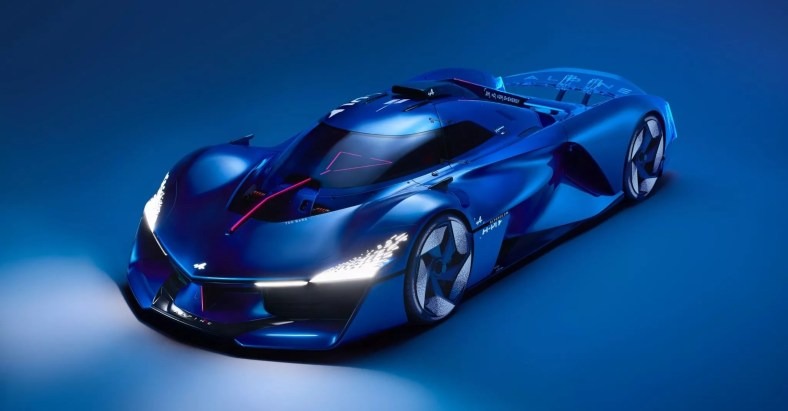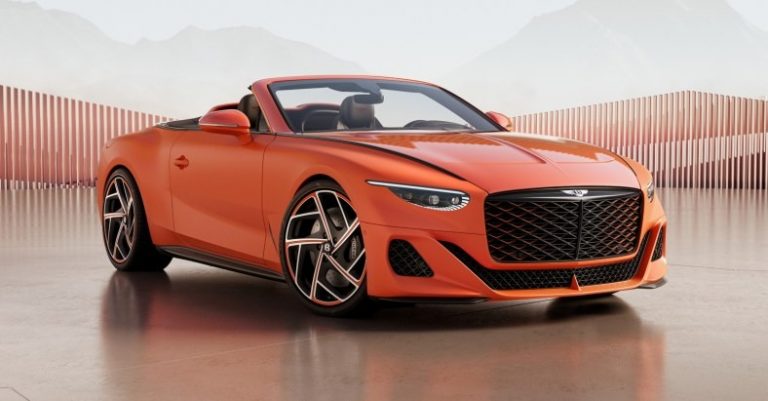Alpine, the renowned French automaker, has made a groundbreaking stride in the automotive industry by unveiling its hydrogen-powered sports car prototype. This innovative vehicle represents a significant step towards sustainable and eco-friendly high-performance cars, merging cutting-edge technology with Alpine’s storied racing heritage.

A Vision for a Greener Future
Alpine’s hydrogen-powered sports car prototype is part of the company’s ambitious strategy to lead the automotive world into a greener future. The prototype, which has been the subject of extensive research and development, showcases the potential of hydrogen as a clean alternative to traditional fossil fuels. Unlike battery-electric vehicles, which rely on lithium-ion batteries, hydrogen-powered cars produce zero emissions, emitting only water vapor.
Technical Specifications
The prototype features a state-of-the-art hydrogen fuel cell system. This system converts hydrogen gas into electricity through a chemical reaction with oxygen, which then powers the car’s electric motor. Here are some key specifications:
- Fuel Cell Power: The fuel cell stack generates a significant amount of power, providing the performance expected from a high-end sports car.
- Range: The hydrogen tank allows for an impressive driving range, comparable to that of traditional gasoline-powered sports cars, without the long refueling times associated with electric vehicles.
- Performance: Alpine’s engineering team has ensured that the prototype delivers exhilarating acceleration and top speed, maintaining the brand’s reputation for producing agile and dynamic vehicles.
Design and Aerodynamics
The design of the hydrogen-powered sports car prototype is a blend of Alpine’s classic aesthetics and modern aerodynamic efficiency. The car features:
- Lightweight Construction: Utilizing advanced materials such as carbon fiber and aluminum, the prototype is both lightweight and robust, enhancing performance and fuel efficiency.
- Aerodynamic Profile: The sleek, low-slung body is designed to minimize drag and maximize downforce, ensuring optimal handling and stability at high speeds.
- Innovative Cooling Systems: Specially designed cooling systems for both the hydrogen fuel cells and the electric motor help maintain optimal operating temperatures, even during intense driving sessions.
Environmental Impact
One of the most significant advantages of hydrogen-powered vehicles is their minimal environmental impact. By emitting only water vapor, the Alpine prototype stands as a beacon of sustainable automotive engineering. Additionally, the use of hydrogen, which can be produced from renewable sources such as wind, solar, and biomass, aligns with global efforts to reduce carbon footprints and combat climate change.
Challenges and Future Prospects
While the hydrogen-powered sports car prototype represents a remarkable achievement, several challenges remain before such vehicles become mainstream. These include:
- Hydrogen Infrastructure: The current lack of widespread hydrogen refueling stations is a major hurdle. For hydrogen-powered vehicles to gain traction, significant investment in infrastructure is necessary.
- Production Costs: Hydrogen fuel cell technology is still relatively expensive to produce. As the technology matures and economies of scale are realized, costs are expected to decrease.
Conclusion
Alpine’s hydrogen-powered sports car prototype is a testament to the company’s commitment to innovation and sustainability. By harnessing the power of hydrogen, Alpine is not only pushing the boundaries of automotive performance but also paving the way for a greener and more sustainable future. This prototype could mark the beginning of a new era in the sports car segment, where high performance and environmental responsibility go hand in hand.


